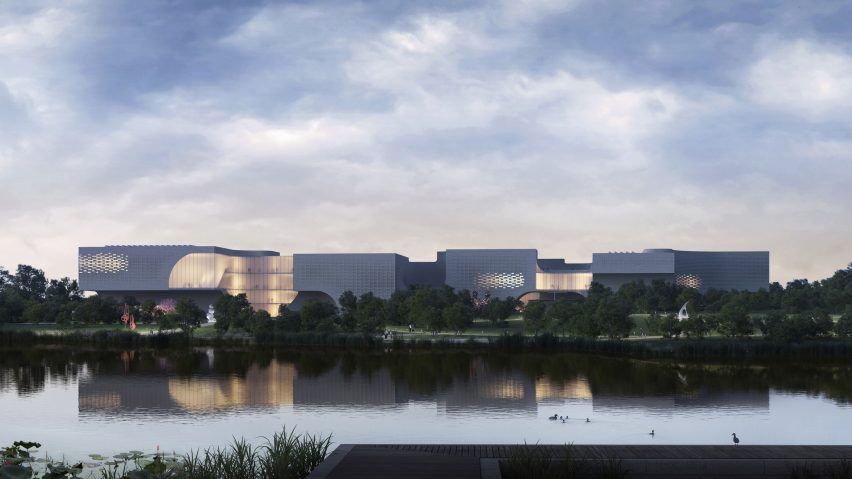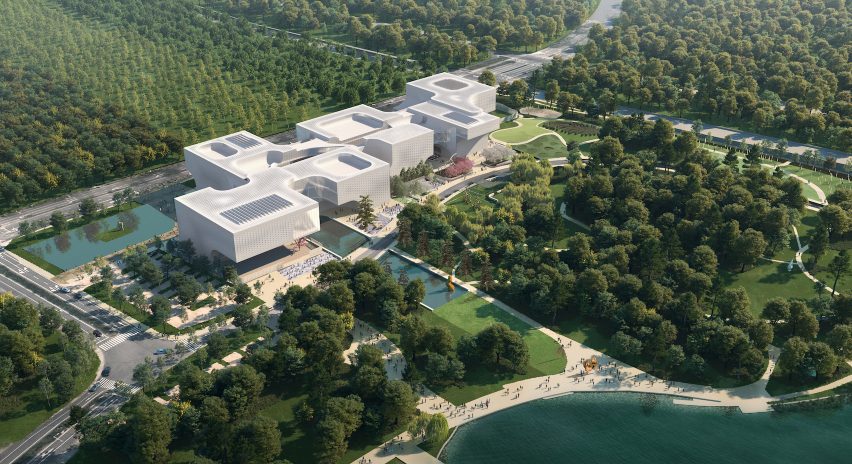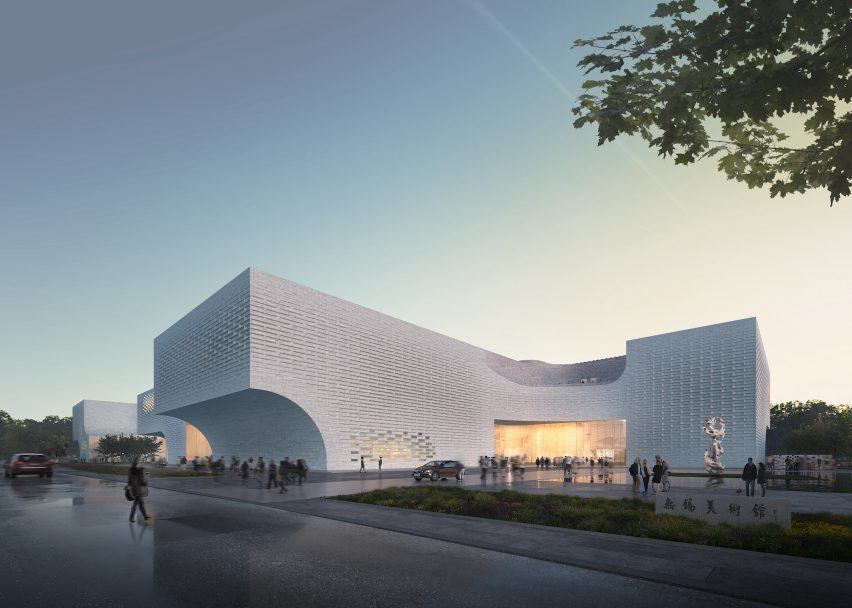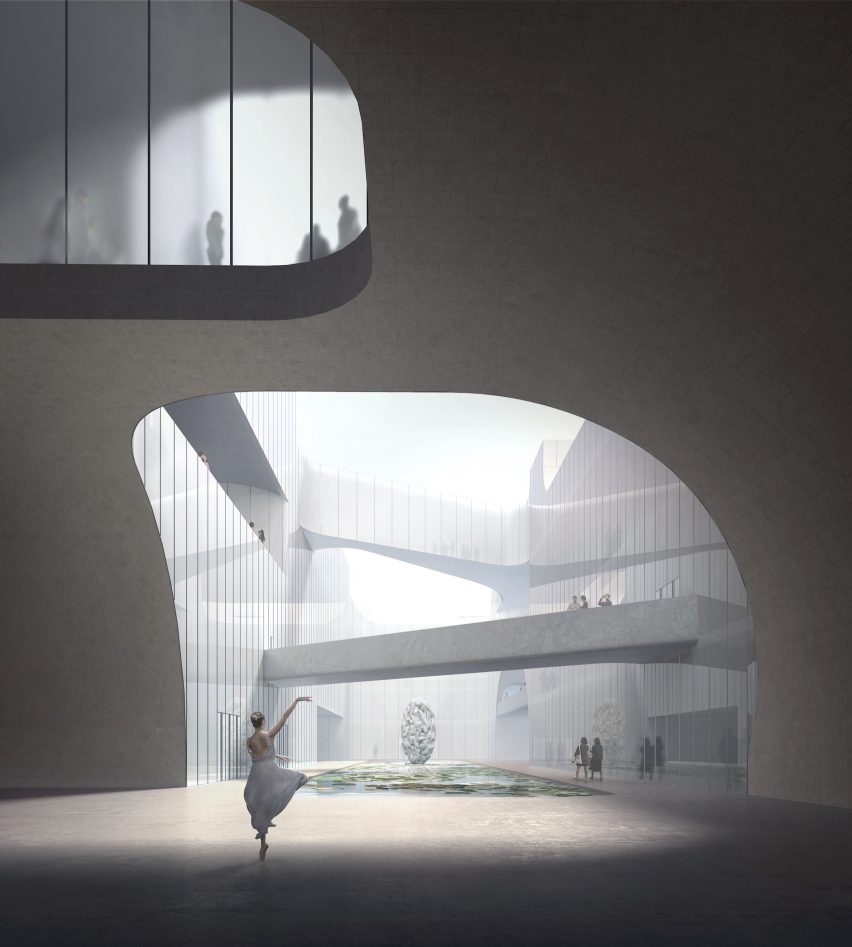
Ennead Architects designs Wuxi Art Museum to emulate "natural erosion of spirit stones"
New York studio Ennead Architects has revealed its design for a museum that is set to be built within Shangxianhe Wetland Park in the city of Wuxi, China.
Named the Wuxi Art Museum, the building will have perforated surfaces and eroded hollows informed by the Taihu stone – a type of limestone often used in traditional gardens in the region.

Both the perforated facade and large voids mimic erosion's impact on the porus Taihu stone.
The punctuated limestone facade and translucent glass curtainwall will allow natural daylight into the interior of the museum while creating a contrasted finish between roughness and smooth.

"Our vision for the Wuxi Art Museum is to set it in a larger overall composition, highlighting views in and our of the museum through subtractive carves and recesses while emulating the natural erosion of spirit stones," said Ennead Architects partner Thomas J Wong.
At the base of the building, the carved voids will be used as sheltered outdoor spaces for hosting events and exhibitions.
Alongside the museum will be a civic plaza where art will be displayed. Different gardens, courtyards and plazas will provide flexible space for visitors to enjoy art projections, movie screenings and performances.
Ennead collaborated with West 8 Landscape Architects on the design of the surrounding landscape based on the local wetland ecology and canal system.

Footbridges connecting galleries on the upper levels of the museum will create viewpoints of a central courtyard with a lily-filled waterscape below.
"The new art museum will serve as a symbol of Wuxi's past, present and future, so it was important to us that its design emerge from the cultural history of the garden city and artfully synthesise art, landscape, and the museum experience into an inextricable whole," said Ennead Architects associate principal Brian H Masuda.
Last year Ennead Architects completed a museum in Shanghai with no straight lines or right angles to reflect the shapes and geometry within the universe. The studio also recently unveiled its design for the Milwaukee Public Museum building in Wisconsin based on geological formations.